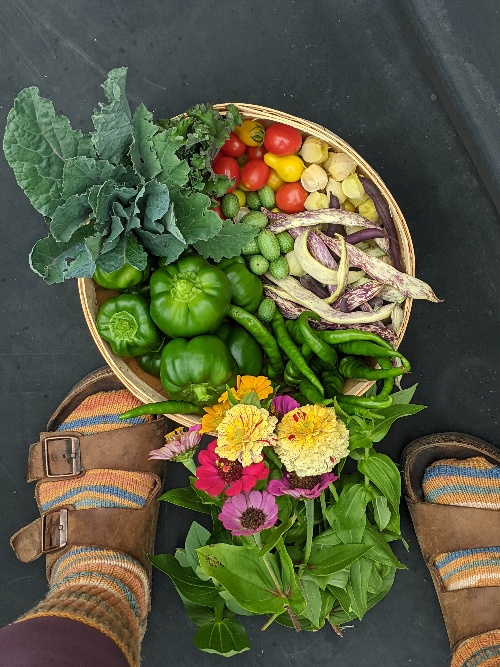
Let’s take a look at Oregon Spring, the tomato variety created at Oregon State University specifically for the short, cool summers of the Pacific Northwest.
Whether you live in a hardiness zone that makes tomato growing challenging or not, this compact tomato has a few surprising traits that make it appealing to gardeners everywhere.
Oregon Spring – a compact and early yielding gem

Short-Season Growers – This Tomato Is For You
The further north you live, the harder it is to be a gardener who loves to grow tomatoes. These long-season, sun-loving nightshades need plenty of warm, sunny weather to produce buckets of tomatoes.
Living somewhere with cooler and shorter summers (Hello to my aunt in Wisconsin!), growing tomatoes often comes with its own set of challenges: starting seeds much earlier in the winter, providing protection toward the end of the growing season, and giving up the many beautiful heirloom indeterminates that grow so well elsewhere.
Luckily, Oregon Spring was bred for you!
Dr. James Baggett, a well-known vegetable breeder from Oregon State University, bred Oregon Spring. While he developed quite a few vegetable varieties that many gardeners rely on today, especially in the Pacific Northwest, Oregon Spring is one of his more well-known varieties.
Attributes

Compact
The Oregon Spring is a determinate type tomato with a compact bush-like growth habit, reaching 18”-36”. Many growers report that they don’t even need to stake it. If you’re short on space or don’t want to fuss with the regular staking and pruning of indeterminate varieties, Oregon Spring may be a good choice for you.
A Spring Champ
Oregon Spring was bred from two Russian varieties – ‘Sevarianin’ and ‘Starshot.’ Its Russian roots play a role in this tomato’s ability to handle chilly spring weather. Unlike many varieties, Oregon Spring can be planted outside nearly a month before that all-important last frost date.
It should be noted, though, that this does not mean it is frost-hardy.
The young plants will need to be protected on nights when frosts occur. A good layer of protective mulch around the best of the plant is also a good idea. Soil should be 55F before transplanting outdoors.

Cool Weather Friend
While most tomato varieties need long, warm days to bear fruit and have it ripen, Oregon Spring was meant to produce in cooler weather.
Parthenocarpic
Oregon Spring is parthenocarpic, which means it produces fruit without being fertilized. Basically, it’s seedless. Or, in Oregon Spring’s case, mostly seedless. The first fruits of the season are almost completely seedless. As the weather warms up and the plant matures, there will be more seeds in subsequent fruit.
Grow several plants and enjoy an early yield of seedless tomatoes. Get your tomatoes canned before the real heat of summer kicks in.
Note: Because it’s a determinate variety, you shouldn’t prune Oregon Spring as you will reduce its yield.
Verticillium Wilt Resistant
Oregon Spring was bred to be resistant to verticillium wilt, a fungal disease that’s common in cooler soil and air temperatures, again making it a great choice for cool season hardiness zones.

A Great Slicing and Canning Tomato
An early-producing tomato doesn’t mean much if it doesn’t taste good, too. Oregon Spring has a wonderful classic tomato flavor with well-balanced acidity, making it perfect for fresh eating or canning and cooking.
Who This Tomato Isn’t Good For
If you live in an area with very hot summers and high humidity, Oregon Spring may not be the right tomato for you. As it’s meant to grow in a cooler, shorter season, the plants tend to slow down and stop bearing fruit if the weather gets hot quickly.
Because it’s a determinate variety, it will set the majority of its fruit all at once. If you’re looking for something that will produce a smaller yield consistently throughout the whole season, you might want to choose an indeterminate variety. (For fresh eating.)
Worth a Spot
This reliable and early-producing tomato has been a fan favorite of those in the know since it was released in the 80s. If you’re looking for something a little different this year that can give you a jump on the season or will ensure you have tomatoes even if you have a short growing season, I recommend you make some space in your garden for Oregon Spring.

Get the famous Rural Sprout newsletter delivered to your inbox.
Including Sunday musings from our editor, Tracey, as well as “What’s Up Wednesday” our roundup of what’s in season and new article updates and alerts.

